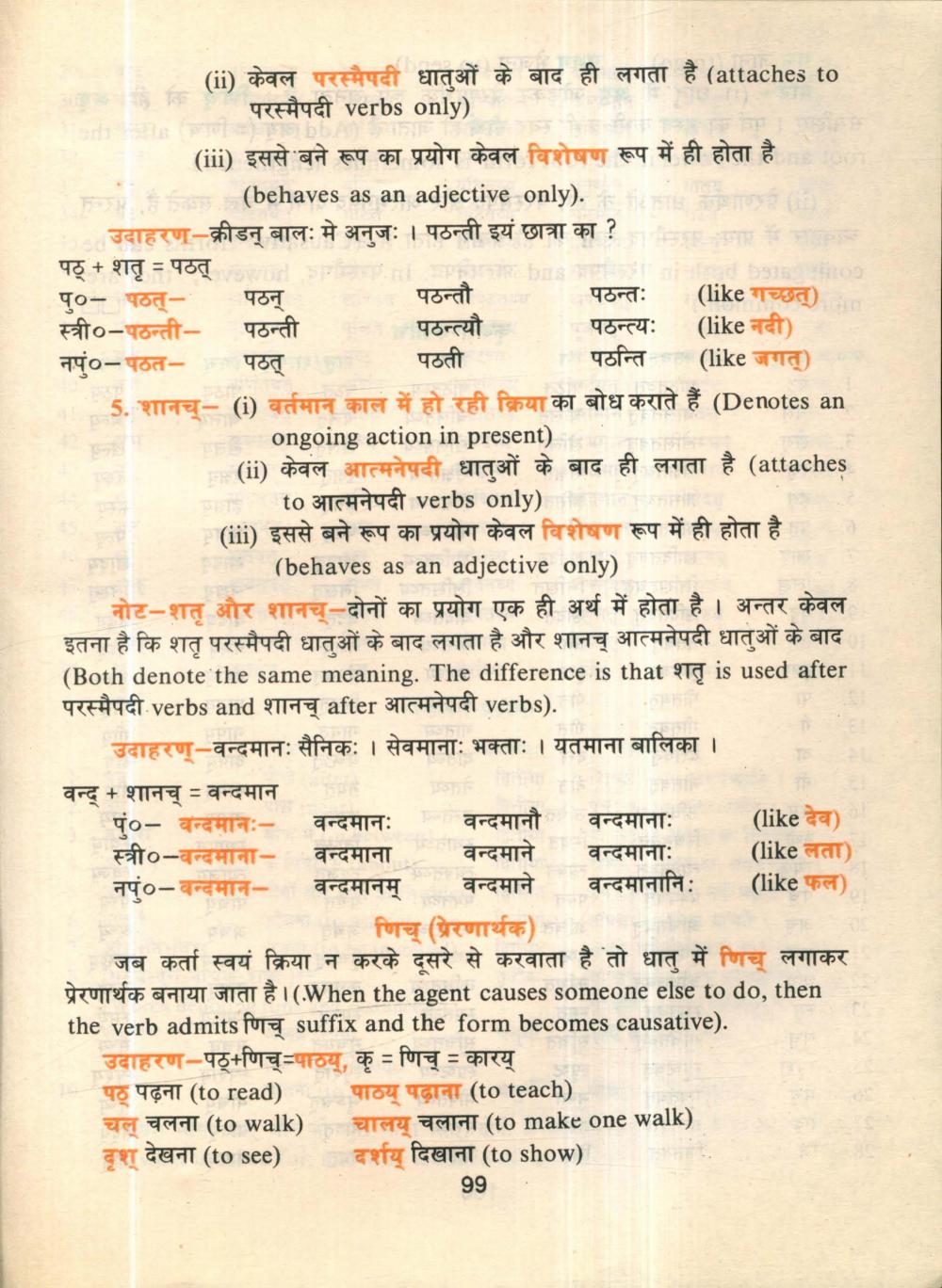________________
(ii) केवल परस्मैपदी धातुओं के बाद ही लगता है (attaches to
परस्मैपदी verbs only) (iii) इससे बने रूप का प्रयोग केवल विशेषण रूप में ही होता है
(behaves as an adjective only). उदाहरण-क्रीडन् बालः मे अनुजः । पठन्ती इयं छात्रा का? पठ् + शतृ = पठत् पु०- पठत्- पठन्
पठन्तौ
पठन्तः (like गच्छत्). स्त्री०-पठन्ती- पठन्ती
पठन्त्यौ
पठन्त्यः (like नदी) नपुं०-पठत- पठत्कार पठती
पठन्ति (like जगत्) ___5. शानच्- (i) वर्तमान काल में हो रही क्रिया का बोध कराते हैं (Denotes an
ongoing action in present) (ii) केवल आत्मनेपदी धातुओं के बाद ही लगता है (attaches शा to आत्मनेपदी verbs only) माता (iii) इससे बने रूप का प्रयोग केवल विशेषण रूप में ही होता है ।
पE (behaves as an adjective only) नोट-शत और शानच-दोनों का प्रयोग एक ही अर्थ में होता है । अन्तर केवल इतना है कि शतृ परस्मैपदी धातुओं के बाद लगता है और शानच् आत्मनेपदी धातुओं के बाद (Both denote the same meaning. The difference is that gay is used after परस्मैपदी verbs and शानच् after आत्मनेपदी verbs).
उदाहरण-वन्दमानः सैनिकः । सेवमानाः भक्ताः । यतमाना बालिका । वन्द् + शानच् = वन्दमान
पुं०- वन्दमानः- वन्दमानः वन्दमानौ वन्दमानाः (like देव) स्त्री०-वन्दमाना- वन्दमाना वन्दमाने वन्दमानाः (like लता) नपुं०-वन्दमान- वन्दमानम् वन्दमाने वन्दमानानि : (like फल)
णिच् (प्रेरणार्थक) जब कर्ता स्वयं क्रिया न करके दूसरे से करवाता है तो धातु में णिच् लगाकर प्रेरणार्थक बनाया जाता है। (.When the agent causes someone else to do, then the verb admits fure suffix and the form becomes causative).
उदाहरण-पठ्+णि-पाठय्, कृ = णिच् = कारय् पठ् पढ़ना (to read) पाठय पढ़ाना (to teach) चल चलना (to walk) चालय चलाना (to make one walk) दृश् देखना (to see) दर्शय दिखाना (to show)
99




